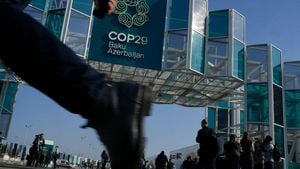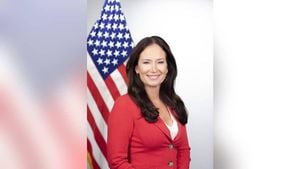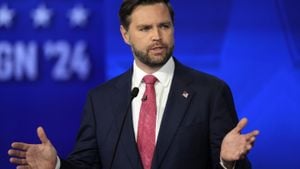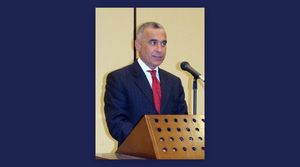NASA's plans for the return of astronauts aboard Boeing's Starliner have taken unexpected turns, with the agency recently announcing it will utilize SpaceX's Crew Dragon capsule instead. Astronauts Butch Wilmore and Suni Williams, who have been on the International Space Station (ISS) since June 2024, were initially scheduled to return after just eight days. Instead, they'll now stay for close to nine months, returning to Earth around February 2025.
The shift came after NASA raised serious concerns about the Starliner, citing multiple helium leaks and issues with its thruster systems, which are key for maneuvers during re-entry. NASA Administrator Bill Nelson addressed these worries during a briefing, clarifying the reasoning behind the switch to SpaceX’s system. "Spaceflight is risky even at its safest, and even at its most routine," Nelson stated. He emphasized NASA's commitment to safety, hence the decision to prioritize their astronauts' security.
The delays echo the growing frustrations surrounding Boeing's Starliner program, which has endured several setbacks since it was contracted by NASA. Originally, the Starliner was meant to provide reliable transport to the ISS. Following the inaugural crewed flight, which finally took place months later than expected, the return is not going as planned either.
NASA confirmed readiness to proceed with the Crew 9 launch, which will take place on September 24, ensuring Wilmore and Williams can return safely, albeit later than intended. The Starliner will now return uncrewed after carrying out additional testing needed to verify the sources of its malfunctions. Wilmore and Williams are set to board the Crew Dragon launch, which will carry additional crew members as well. This means their scheduled return will keep adding to their record-breaking duration aboard the ISS, pushing them to new heights as they continue conducting experiments and maintenance during the extended stay.
Despite the challenges faced, both NASA and Boeing remain committed to finding solutions. "We want to understand the root causes of the prior failures thoroughly and make the necessary design improvements," stated Nelson. The Starliner, even with current setbacks, is seen as fundamental for NASA’s future plans to maintain access to the ISS, working alongside SpaceX’s capabilities.
NASA's decision to prioritize SpaceX for bringing back the astronauts reflects the shifting dynamics within the commercial space industry. Once perceived as just another player, SpaceX has now taken the lead, completing several successful missions since it commenced crewed flights back in 2020. Their reliability and speed have led to NASA's endorsement as they approach moving forward with multiple crewed missions aboard their spacecraft.
Boeing's Starliner program has seen difficulties before, with its first intended crewed flight pushed back nearly four years and frustrating delays causing it to incur additional expenses exceeding $1.5 billion. The Starliner flight received mixed reviews following earlier troubles, and contingencies surrounding re-entry targets only amplified NASA’s concern for the astronauts' safety.
When initially launched, the Starliner experienced minor helium leaks, which raised alarms as the flight progressed, along with malfunctioning thrusters. A NASA program manager, Steve Stich, noted the inability to confidently predict the thrusters' behavior during the return, leading to the decision against sending the crew back on Starliner.
The new reality poses questions about the future of Boeing’s Starliner program. Although applauded for its design, it is clear improvements will be necessary before the capsule fully integrates with NASA's operations. Still, NASA insists they haven't lost faith entirely, with the administrators expressing optimism over Boeing's capabilities. Nelson mentioned, "Boeing can come back strong, and we see their competence here still, especially as we look to future crewed missions."
Looking forward, astronauts Wilmore and Williams can anticipate their new mission. Once they arrive back on Earth via the SpaceX Crew Dragon, they will have accomplished the rare feat of having flown aboard four different spacecraft, encompassing NASA's Space Shuttle, Russia's Soyuz, Boeing's Starliner, and SpaceX's Crew Dragon, emphasizing the growing diversity within human spaceflight missions undertaken by different providers.
So, what does this signify for the future? With NASA emphasizing the need for safety and reliability, the agency's adaptability showcases its commitment to advancing space exploration. The partnership with Boeing continues, though both sides must prioritize learning from the current challenges to prevent similar complications during future crewed missions. The relationship spans more than just one project; building trust from these experiences remains key for both NASA’s immediate challenges and the longstanding collaboration between the agency and Boeing for years to come.



